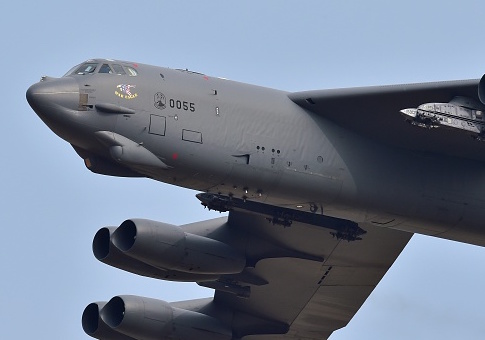The Trump administration has revamped U.S. military strategy against the Taliban and ISIS in Afghanistan, reversing the Obama administration’s policy prohibiting offensive strikes.
The administration now allows American commanders to carry out airstrikes that are not strictly defensive, freeing them up to drop three times as many bombs and missiles as last year, the New York Times reports. The Obama administration restricted U.S. forces to defensive strikes with the purpose of protecting Afghan forces, and with their hands untied this year, commanders have taken advantage of the policy change.
"These new authorities give me the ability to go after the enemy in ways that I couldn’t before," top American commander in Afghanistan Gen. John W. Nicholson Jr. said after ordering operation Jagged Knife last month.
The offensive operations have targeted Taliban drug production, which is critical to the terrorist organization's economic stability. U.S. forces have also targeted ISIS's oil tankers and other assets.
"We’re hitting the Taliban where it hurts, which is their finances," Nicholson said.
American warplanes, including the B-52 bomber, have dropped more than 3,900 bombs and missiles on Afghanistan targets this year, which is triple the number from last year. Military officials said U.S. strikes and ground raids have destroyed 25 drug labs in southern Afghanistan in the past month alone.
Since the Taliban is estimated to operate as many as 500 drug labs as part of its opium trade, Nicholson expects the campaign to last for months. The Taliban maintains an annual opium trade of about $200 million, which accounts for at least 60 percent of its income that then goes toward weapons, operations, and recruitment.
Trump’s overall strategy is to force the Taliban into negotiating a settlement by crippling its economy, support the Afghan army’s offensives, and allow the government to hold elections to increase its legitamacy. The strikes are critical to forcing the Taliban to change course.
"The Taliban have three choices: reconcile, face irrelevance or die," Nicholson said.
The military is also learning about the Taliban through the attacks and the Taliban’s response.
"These strikes and the aftermath taught us a lot about the complexity of the Taliban’s narcotics operations," said Navy Lt. William Conway, lead intelligence officer for Afghanistan.
Critics such as Daniel R. Mahanty, a program director at the Center for Civilians in Conflict advocacy group, question whether U.S. operations will benefit Afghanis.
"If you increase the number of strikes without allocating the time, personnel and resources to preventing, investigating and acknowledging each one, you get more civilian casualties," Mahanty said.
Nicholson, however, has stated the military has hundreds of analysts who have been working to identify targets and reduce civilian casualties.
Others have argued strikes may have limited value because production can move to other countries.
"It’s useful to impact the Taliban financially, but it may just drive production into neighboring Pakistan or Iran," retired Army lieutenant general David W. Barno said.
According to government estimates, strikes over the past month have cost the Taliban $16 million in drug proceeds.
This year, the Trump administration's strategy has involved not only stepping up efforts to bomb the Taliban and ISIS in Afghanistan, but also retaking former ISIS strongholds in Iraq and Syria. Trump campaigned on increasing bombing efforts on terrorist groups in the Middle East while also saying he did not want to start unnecessary wars.
